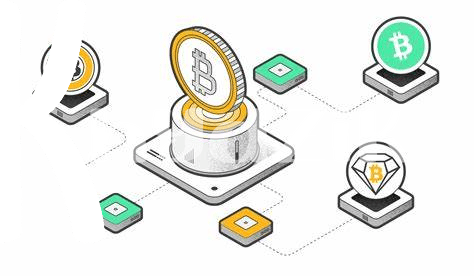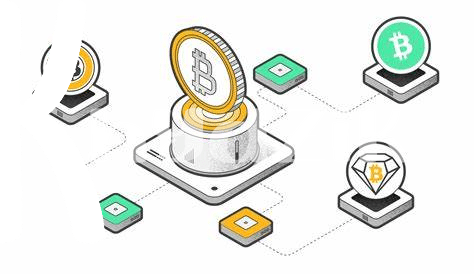🌍 Global Perspectives on Cryptocurrency Regulation

Imagine a world where every country has its own rules for playing a very complex game, some with strict boundaries and others with a free-for-all attitude. That’s pretty much the scene when we talk about regulating digital money, or as most know it, cryptocurrency. Around the globe, from the busy streets of New York to the vibrant markets of Tokyo, governments are scratching their heads, trying to figure out how to handle this new form of money. Some countries welcome it with open arms, seeing it as a path to innovation and growth, while others are a bit cautious, worried about potential risks like fraud or money laundering. It’s a delicate dance between protecting the citizens and not stifling the creative energy that cryptocurrencies bring to the financial world.
| Country | Stance on Cryptocurrency |
|---|---|
| USA | Regulated with a focus on innovation |
| China | Strict regulations, with bans on transactions |
| Japan | Welcomes with regulatory measures for safety |
| India | Mixed approach with evolving regulations |
| Switzerland | Open and friendly, known as “Crypto Valley” |
This patchwork of regulations highlights a crucial challenge: finding common ground on a global scale. It’s not just about taming the wild west of digital currencies but paving the way for a future where innovation, security, and financial stability walk hand in hand.
🚦 the Dilemma of Cryptocurrency and Government Control
Imagine walking into a vast digital playground where every move is watched, yet the freedom to run is limitless. This is the world of cryptocurrency under the gaze of government control. On one side, authorities aim to keep the grounds safe and orderly, fearing that without oversight, digital currencies might become the wild west of the financial world. Every step toward control, however, sparks debates on how much surveillance is too much, threatening the very essence of what makes cryptocurrencies unique – their independence and decentralization.
In this balancing act, the goal is to protect users from digital pickpockets while also nurturing an environment where innovation can thrive. It’s like trying to direct the growth of a vast forest; too much intervention could stifle its natural expansion, yet leaving it completely untamed might make it a haven for lawlessness. For those interested in exploring the effects of policy changes on this intricate ecosystem, a deeper dive can be found here, offering insights into how regulations could shape the future landscape of bitcoin and other cryptocurrencies.
📉 Market Stability Vs. Innovation: Striking a Balance

Finding the right balance between keeping the digital money market stable and allowing new, innovative ideas to grow is a bit like walking a tightrope. Too much control and the space can become stifled, limiting what new technologies can do. On the other hand, not enough oversight might mean that people’s money is at risk, and the market could become like the wild west – unpredictable and risky for the everyday person. The goal is to create a playing field that’s safe for everyone while still letting the bright minds out there come up with amazing new things.
Think of it like this: You want a garden that’s both beautiful and fruitful. Too many rules on what can be planted could mean missing out on incredible, exotic flowers that could thrive. However, without some guidelines, the stronger, wilder plants could take over, choking out the delicate ones, and leaving the garden a mess. The task ahead is finding that perfect sweet spot – where innovation blooms within a framework that protects and nurtures it. This balance is crucial for a future where digital money is not just exciting and innovative but also a safe and stable part of everyday life.
💡 Cryptocurrency as a Tool for Financial Inclusion

Imagine a world where everyone, no matter where they’re from or how wealthy they are, has the same access to money and financial services. This is where cryptocurrencies shine! They’re like digital money that can go anywhere in the world, fast and without needing permission from banks. This means that people in remote or less developed areas could join in on the global economy, simply with a mobile phone in their hands. Cryptocurrencies have this awesome power to include more people in financial matters, especially those who’ve been left out before.
However, making sure this digital money can be used safely and fairly comes with its challenges. It’s important for everyone to understand how it all works and what rules are in place. Learning about this can feel overwhelming, but there’s plenty of information out there to help, like understanding the political campaigns accepting bitcoin donations regulatory outlook. Through education and smart policies, the dream of using cryptocurrency to bring more people into the financial fold can become a reality. With careful steps, we can make the most of this technology and truly open up the financial world to everyone.
🛑 Challenges and Risks of Unregulated Digital Currencies
Imagine a world where anyone can create their own type of digital money, kind of like an online version of Monopoly money, but some people start using it for real purchases. This scenario is closer to reality than you might think, with digital dollars, or cryptocurrencies, popping all over the internet. However, without rules in place, it can be a bit like the Wild West. If something goes wrong—maybe someone’s digital wallet gets stolen, or a new digital money suddenly becomes worthless—there’s not always a clear way to fix things. This lack of regulation can make it risky for users, as there’s no safety net.
The thrill of these digital currencies also comes with its share of headaches. For instance, because they’re not regulated like traditional money, their value can swing wildly. Imagine waking up to find the money you put into a digital currency is now worth half of what it was the day before! Plus, without oversight, there’s a greater chance for bad actors to use these platforms for things that aren’t exactly legal, which can hurt trust and create more problems down the road. It’s a bit like playing a game where the rules can change at any moment—exciting, but also kind of scary.
| Challenge or Risk | Description |
|---|---|
| Volatility | The value of unregulated digital currencies can change dramatically in a very short time, making them unpredictable. |
| Lack of Protection | Without regulations, if something goes wrong—like theft or fraud—users have fewer ways to get help or recover lost assets. |
| Illegal Activities | The anonymity and lack of oversight make digital currencies appealing for illegal transactions, which can harm overall trust. |
| Market Confusion | With new digital currencies constantly appearing, it can be difficult for users to make informed choices. |
📚 Educating the Public on Cryptocurrency and Policies

Learning about cryptocurrencies and the rules surrounding them is like diving into a whole new world, full of exciting possibilities yet peppered with its own set of challenges. To navigate these waters safely, it’s crucial that everyone, from your next-door neighbor to your grandma, gets the scoop on how these digital currencies work and why they’re so talked about. Imagine understanding the nuts and bolts of digital money as easily as you’d understand a recipe for your favorite dish! That’s the goal. And just like any new tool or tech gadget we get our hands on, knowing the dos and don’ts is key to making the most out of it and staying safe. Whether you’re curious about how your digital wallet can brick up digital cash or you’re pondering over the impact of the latest government guidelines on your crypto stash, getting the right info matters. For a deep dive into the crypto world, including how to keep your coins safe and sound, check out our guide on recovering lost bitcoin: techniques and advice regulatory outlook. It’s your go-to resource for getting a better grasp on the digital currency landscape, ensuring you’re well-equipped to make informed decisions in the ever-evolving world of cryptocurrencies.
